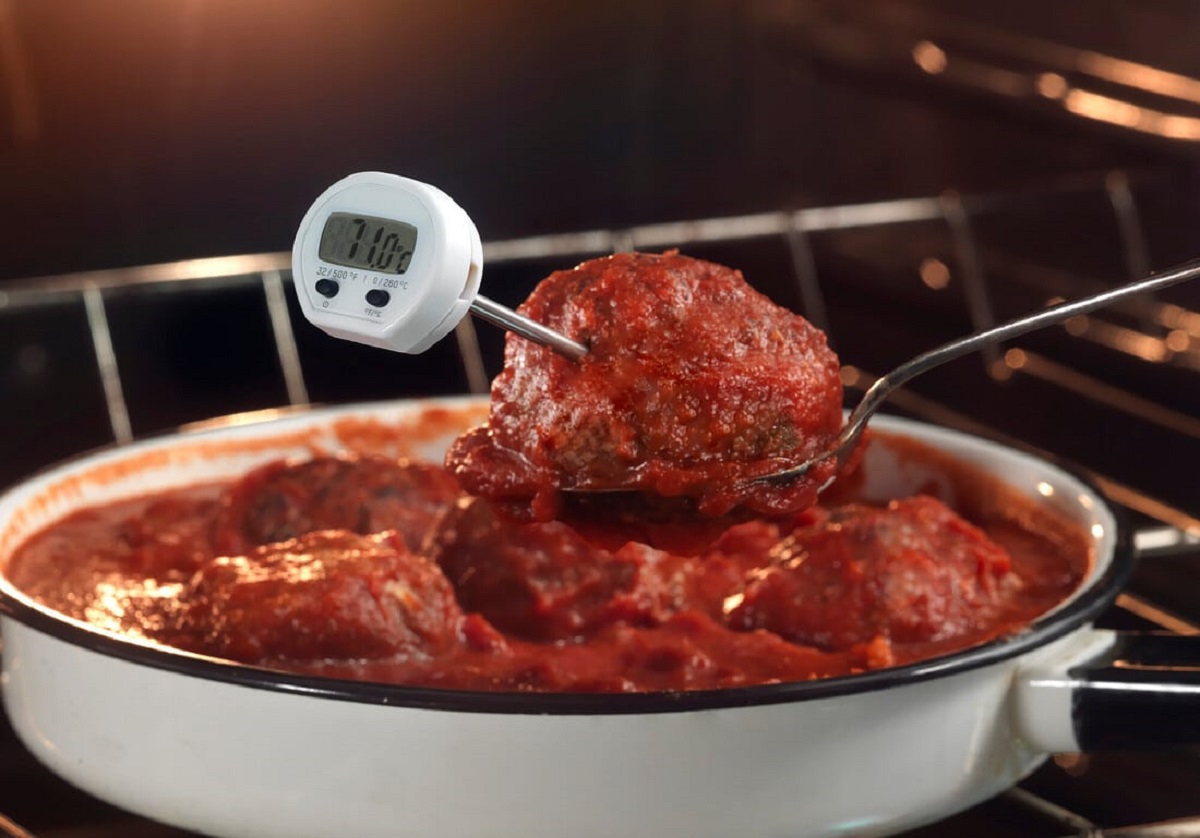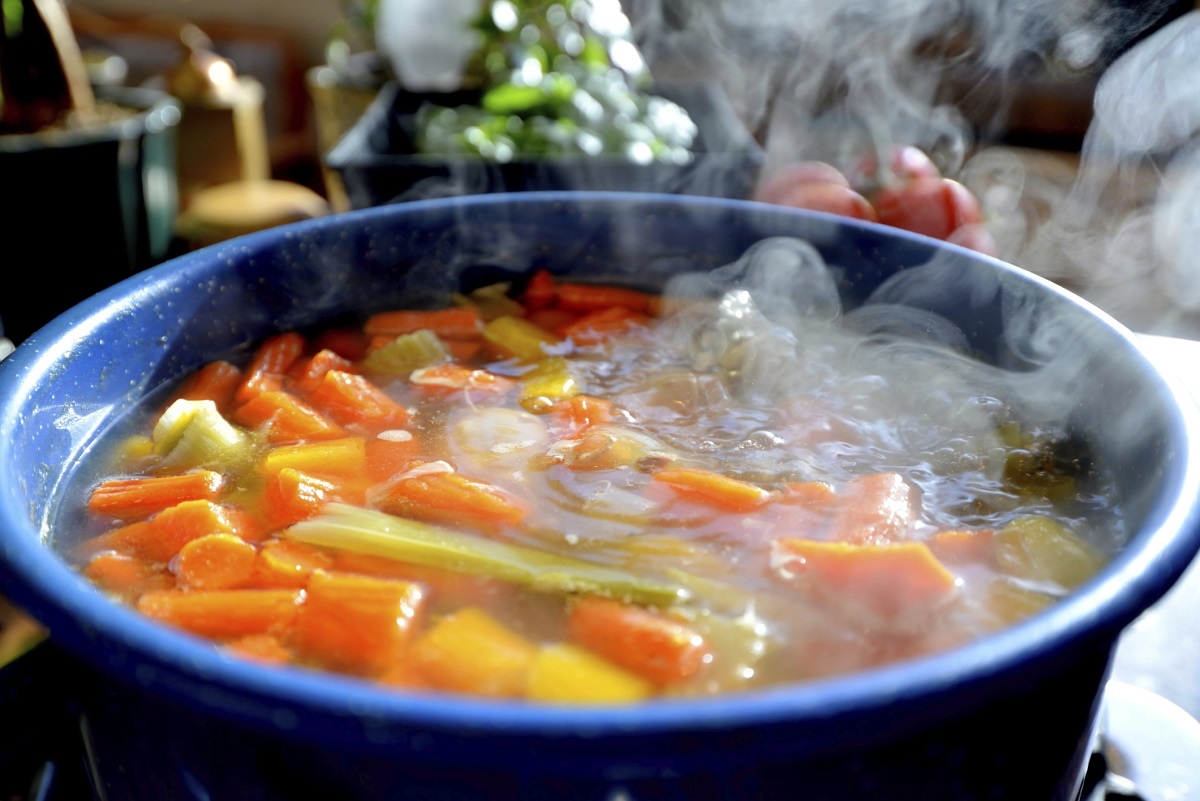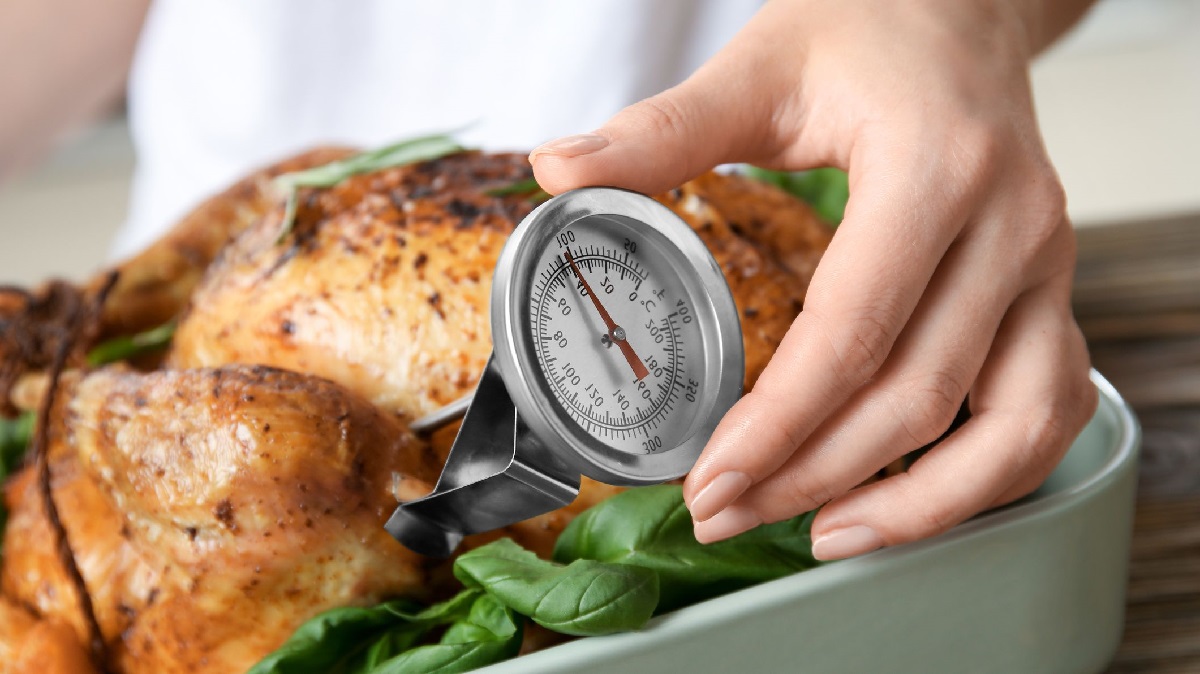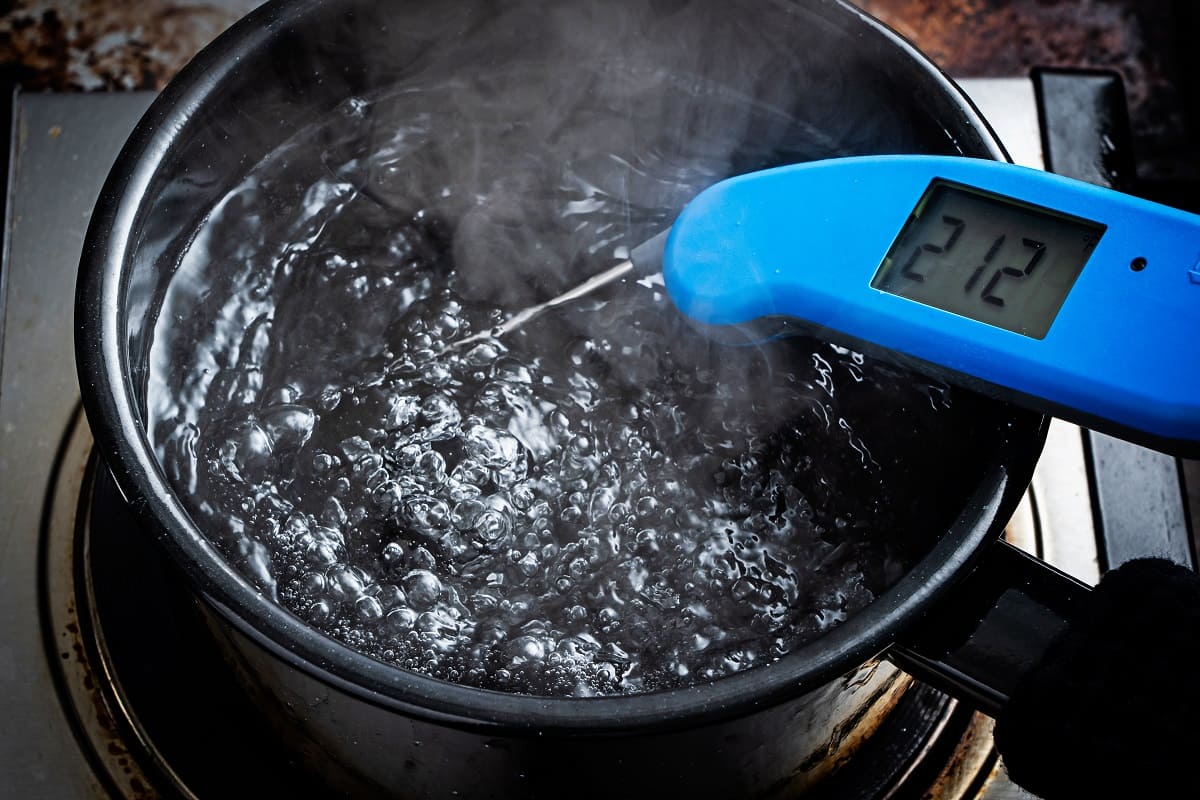Home>Culinary & Beverages>Reducing Bacteria In Vegetables For Safe Hot Holding: Effective Methods For Food Handlers
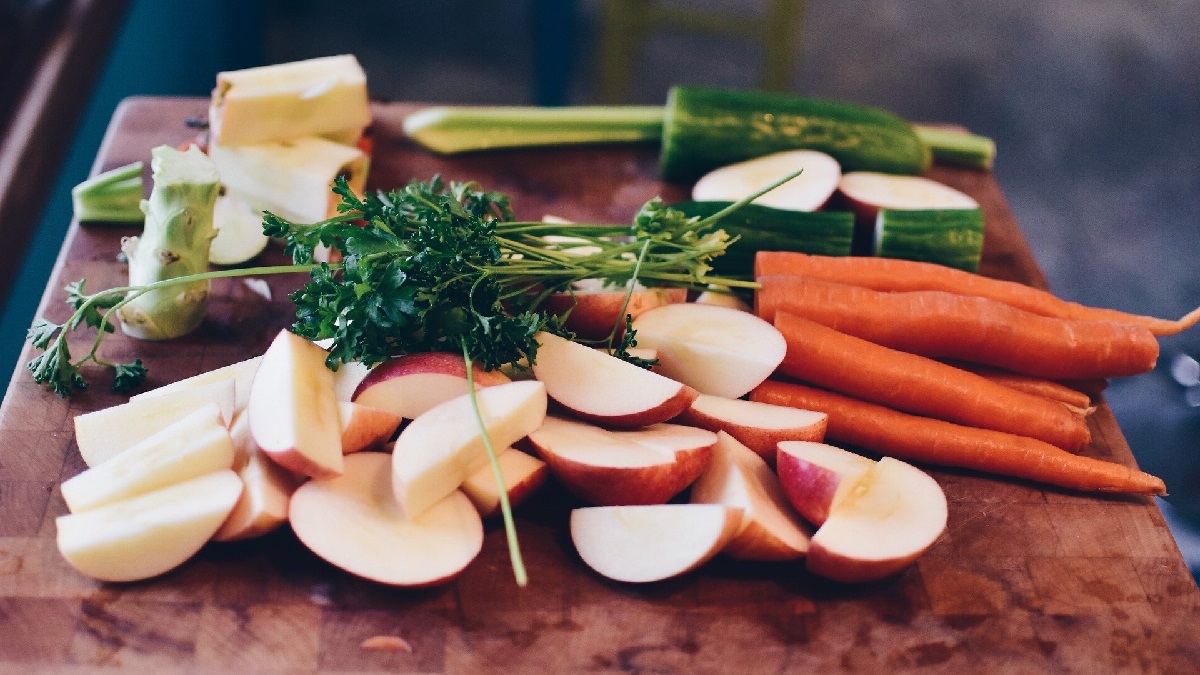

Culinary & Beverages
Reducing Bacteria In Vegetables For Safe Hot Holding: Effective Methods For Food Handlers
Published: February 22, 2024
Learn effective methods for food handlers to reduce bacteria in vegetables, ensuring safe hot holding. Culinary & Beverages expertise at your fingertips!
(Many of the links in this article redirect to a specific reviewed product. Your purchase of these products through affiliate links helps to generate commission for Temperatures.com, at no extra cost. Learn more)
Table of Contents
Introduction
Ensuring food safety is a critical aspect of the culinary industry, and the proper handling of vegetables is of utmost importance in this regard. Food handlers play a pivotal role in reducing the risk of bacterial contamination in vegetables, particularly during hot holding. By implementing effective methods, food handlers can significantly minimize the presence of harmful bacteria, thereby safeguarding the health of consumers.
In the following sections, we will delve into the significance of reducing bacteria in vegetables for safe hot holding, explore the common bacteria found in vegetables, and discuss the practical methods that food handlers can employ to mitigate bacterial contamination. Additionally, we will highlight the essential considerations related to proper temperature and time for hot holding, providing comprehensive insights into the best practices for maintaining food safety standards.
By understanding the potential risks associated with bacterial contamination in vegetables and adopting proactive measures to address these concerns, food handlers can contribute to the overall well-being of consumers. Let's embark on this journey to explore the effective strategies and guidelines that empower food handlers to uphold the highest standards of food safety in vegetable handling.
Importance of Reducing Bacteria in Vegetables for Safe Hot Holding
The importance of reducing bacteria in vegetables for safe hot holding cannot be overstated in the realm of food safety. Vegetables are an integral component of numerous culinary creations, ranging from vibrant salads to hearty stir-fries. However, these nutrient-rich ingredients are also susceptible to bacterial contamination, posing potential health risks if not handled and stored properly.
When vegetables are subjected to hot holding, which involves maintaining them at a specific temperature to preserve their quality and safety, the presence of bacteria becomes a critical concern. Bacteria thrive in warm environments, and if left unchecked, they can multiply rapidly, leading to foodborne illnesses when consumed. Therefore, the primary objective of reducing bacteria in vegetables for safe hot holding is to mitigate the risk of contamination and uphold the integrity of the prepared dishes.
By implementing stringent measures to minimize bacterial presence in vegetables, food handlers play a pivotal role in safeguarding the health of consumers. The adherence to rigorous hygiene practices, proper storage techniques, and effective sanitation procedures is essential in this context. Additionally, the utilization of reliable temperature control mechanisms during hot holding is imperative to inhibit bacterial growth and maintain the freshness and safety of the vegetables.
Furthermore, reducing bacteria in vegetables for safe hot holding aligns with the overarching goal of upholding food safety standards in culinary establishments. Whether in restaurants, catering services, or institutional kitchens, the meticulous attention to vegetable handling and hot holding procedures reflects a commitment to delivering wholesome and hygienic meals to patrons. This not only enhances the reputation of the food establishment but also fosters trust and confidence among consumers, who prioritize the consumption of safe and uncontaminated food.
In essence, the significance of reducing bacteria in vegetables for safe hot holding transcends mere culinary practices; it embodies a profound dedication to ensuring the well-being of individuals who partake in the culinary offerings. By recognizing the critical importance of this endeavor, food handlers can proactively contribute to the prevention of foodborne illnesses and the promotion of a safe and enjoyable dining experience for all.
Common Bacteria Found in Vegetables
When it comes to ensuring food safety, understanding the common bacteria found in vegetables is paramount for food handlers. By familiarizing themselves with these microorganisms, food handlers can implement targeted strategies to mitigate their presence and minimize the risk of contamination. Several types of bacteria are commonly associated with vegetables, posing potential health hazards if not effectively controlled. Among the prevalent bacteria found in vegetables, the following are of particular significance:
-
Salmonella: This pathogenic bacterium is a well-known culprit in foodborne illnesses and is often associated with raw vegetables, such as tomatoes, cucumbers, and leafy greens. Salmonella contamination can occur during the cultivation, harvesting, or processing of vegetables, making it essential for food handlers to adopt stringent measures to prevent its proliferation.
-
Escherichia coli (E. coli): Certain strains of E. coli, such as E. coli O157:H7, can cause severe foodborne infections and are frequently linked to leafy greens, sprouts, and other raw vegetables. The presence of E. coli in vegetables can stem from environmental factors, irrigation water, or improper handling practices, underscoring the need for proactive interventions to minimize its impact.
-
Listeria monocytogenes: Listeria is a resilient bacterium that can thrive in various environments, including those encountered during vegetable production and processing. Contamination with Listeria monocytogenes can occur in pre-cut or pre-packaged vegetables, presenting a significant risk, particularly for vulnerable populations. Diligent control measures are essential to mitigate the potential spread of this pathogen.
-
Clostridium perfringens: This bacterium is known for its association with soil and can contaminate vegetables during the growing and harvesting stages. Clostridium perfringens can pose a threat when vegetables are subjected to improper hot holding conditions, allowing the bacterium to proliferate and compromise food safety.
By recognizing the prevalence of these bacteria in vegetables, food handlers can tailor their food safety protocols to address specific risks associated with each type of bacterium. Implementing thorough cleaning and sanitation practices, adhering to proper storage and temperature control measures, and ensuring meticulous hygiene during vegetable handling are essential steps in mitigating the impact of these common bacteria. Through proactive vigilance and targeted interventions, food handlers can effectively reduce the risk of bacterial contamination in vegetables, thereby enhancing the overall safety and quality of culinary offerings.
Effective Methods for Food Handlers to Reduce Bacteria in Vegetables
Implementing effective methods to reduce bacteria in vegetables is a fundamental responsibility for food handlers, as it directly impacts the safety and quality of culinary preparations. By integrating robust practices and adhering to stringent guidelines, food handlers can significantly mitigate the risk of bacterial contamination in vegetables. The following methods are essential for achieving this objective:
-
Thorough Washing and Sanitization: Prior to hot holding or further processing, vegetables must undergo thorough washing to remove soil, debris, and potential bacterial contaminants. Food handlers should utilize potable water and, when applicable, food-grade sanitizers to ensure the cleanliness of vegetables. This step is crucial in eliminating surface bacteria and reducing the likelihood of cross-contamination during subsequent handling.
-
Proper Storage and Refrigeration: Maintaining the freshness and safety of vegetables necessitates proper storage and refrigeration practices. Food handlers should store vegetables at recommended temperatures to inhibit bacterial growth. Additionally, separating raw vegetables from ready-to-eat items in refrigeration units helps prevent cross-contamination and preserves the integrity of the produce.
-
Adherence to Hygiene Protocols: Food handlers must uphold strict personal hygiene standards when handling vegetables. This includes wearing clean and appropriate attire, utilizing gloves when necessary, and regularly washing hands to prevent the transfer of bacteria. By prioritizing hygiene, food handlers can minimize the introduction of harmful microorganisms to the vegetables they handle.
-
Utilization of Safe Water Sources: Water used for washing vegetables and preparing solutions should meet safety standards to prevent bacterial contamination. Food handlers should verify the quality of water sources and, when applicable, utilize potable water for all vegetable-related activities. This precaution is vital in mitigating the risk of bacterial infiltration during vegetable processing.
-
Temperature Control During Hot Holding: When vegetables are subjected to hot holding, maintaining the appropriate temperature is critical for inhibiting bacterial proliferation. Food handlers must utilize reliable heating equipment and monitoring devices to ensure that vegetables are held at the recommended temperature thresholds. This proactive approach effectively reduces the risk of bacterial growth during hot holding.
By integrating these methods into their food handling practices, food handlers can effectively reduce bacteria in vegetables, thereby enhancing food safety and minimizing the potential for foodborne illnesses. These proactive measures underscore the commitment of food handlers to upholding the highest standards of hygiene and quality in vegetable handling, ultimately contributing to the well-being and satisfaction of consumers.
Proper Temperature and Time for Hot Holding
Maintaining the proper temperature and adhering to specific time parameters during hot holding are critical aspects of preserving the safety and quality of vegetables. Hot holding serves as a pivotal stage in the culinary process, enabling the retention of optimal flavors and textures while preventing the proliferation of harmful bacteria. Food handlers must meticulously observe the recommended temperature and time guidelines to ensure the efficacy of hot holding in minimizing bacterial contamination.
The ideal temperature for hot holding vegetables typically ranges between 135°F (57°C) and 140°F (60°C). This temperature range is conducive to inhibiting bacterial growth while preserving the palatability and nutritional value of the vegetables. It is imperative for food handlers to utilize reliable heating equipment, such as steam tables, warming trays, or hot holding cabinets, to maintain vegetables at the specified temperature thresholds consistently. Additionally, employing food thermometers to monitor the internal temperature of the vegetables is essential for verifying compliance with the prescribed standards.
In conjunction with temperature control, the duration of hot holding plays a crucial role in ensuring food safety. The recommended time for hot holding vegetables should not exceed two hours to minimize the risk of bacterial proliferation. Prolonged exposure to hot holding conditions can compromise the integrity of the vegetables and create an environment conducive to bacterial growth. Therefore, food handlers must exercise diligence in monitoring the duration of hot holding, promptly transitioning vegetables to refrigeration or consumption after the designated time period.
Adhering to these temperature and time parameters for hot holding is instrumental in mitigating the risk of bacterial contamination in vegetables. By upholding these standards, food handlers demonstrate a steadfast commitment to preserving food safety and delivering wholesome culinary offerings to consumers. The meticulous attention to temperature control and time management during hot holding reflects the dedication of food handlers to upholding the highest standards of hygiene and quality in vegetable handling, ultimately contributing to the well-being and satisfaction of patrons.
In essence, the proper temperature and time for hot holding serve as foundational pillars in the overarching framework of food safety, underscoring the proactive measures undertaken by food handlers to safeguard the integrity of culinary preparations. By prioritizing these critical parameters, food handlers uphold the principles of diligence and responsibility, thereby fostering a culture of excellence in food safety practices.
Conclusion
In conclusion, the meticulous reduction of bacteria in vegetables for safe hot holding is a fundamental imperative for food handlers across the culinary landscape. By recognizing the inherent risks associated with bacterial contamination and implementing targeted strategies to mitigate these risks, food handlers play a pivotal role in upholding the highest standards of food safety and quality. The significance of reducing bacteria in vegetables extends far beyond mere culinary practices; it embodies a profound dedication to ensuring the well-being of individuals who partake in the culinary offerings.
Through the exploration of common bacteria found in vegetables and the effective methods for food handlers to minimize their presence, it becomes evident that proactive interventions are essential in safeguarding the safety and integrity of culinary preparations. Thorough washing and sanitization, proper storage and refrigeration, adherence to hygiene protocols, utilization of safe water sources, and temperature control during hot holding collectively form a comprehensive framework for reducing bacteria in vegetables. By integrating these methods into their food handling practices, food handlers demonstrate a steadfast commitment to preserving food safety and delivering wholesome culinary offerings to consumers.
Furthermore, the adherence to proper temperature and time parameters during hot holding underscores the diligence and responsibility of food handlers in maintaining the safety and quality of vegetables. By upholding these standards, food handlers contribute to the prevention of foodborne illnesses and the promotion of a safe and enjoyable dining experience for all. The meticulous attention to temperature control and time management during hot holding reflects the dedication of food handlers to upholding the highest standards of hygiene and quality in vegetable handling, ultimately contributing to the well-being and satisfaction of patrons.
In essence, the effective reduction of bacteria in vegetables for safe hot holding embodies a proactive commitment to food safety, reflecting the unwavering dedication of food handlers to the well-being of consumers. By embracing these principles and integrating them into their daily practices, food handlers uphold the principles of diligence and responsibility, thereby fostering a culture of excellence in food safety practices.
